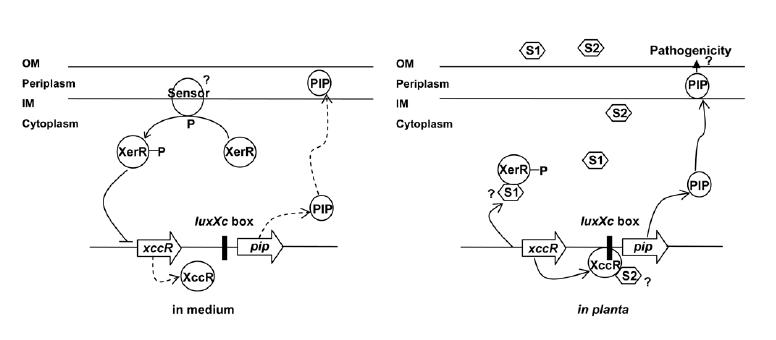Researchers headed by Prof. FANG Rongxiang and Dr. JIA Yantao from State Key Laboratory of Plant Genomics, Institute of Microbiology, Chinese Academy of Sciences discover that the bacteria may sense the molecules produced by eukaryotes and successfully invade the host plant.
The bacterium Xanthomonas campestris pv. campestris (Xcc) can infect crucifers and cause black rot. Researchers have found that XccR, a LuxR-type regulator of Xcc activates the down stream proline iminopeptidase virulence gene (pip) in response to certain host plant factors. Recently they find that the expression of the xccR gene is repressed in the culture medium by an NtrC-type response regulator which they named XerR (XccR expression-related, repressor), and this repression is relieved when the bacteria are grown in planta.
They also preliminarily characterize the host factor(s) involved in the interactions between Xcc and the host plant. Their results implicate XerR in a new layer of the regulatory mechanism controlling the expression of the virulence-related xccR/pip locus and provide clues to identification of plant signal molecules that interact with XerR and XccR to enhance the virulence of Xcc.
This study was published in Cell Research (doi: 10.1038/cr.2011.64) on 12 April, 2011. The work is supported by grants from the National Natural Science Foundation of China and the National Basic Research Program of China.
Contact:
JIA Yantao, Associate Professor
State Key Laboratory of Plant Genomics
Institute of Microbiology, Chinese Academy of Sciences
Email: jiayt@im.ac.cn

-- A model for the expression regulation of xccR/pip locus by XerR --